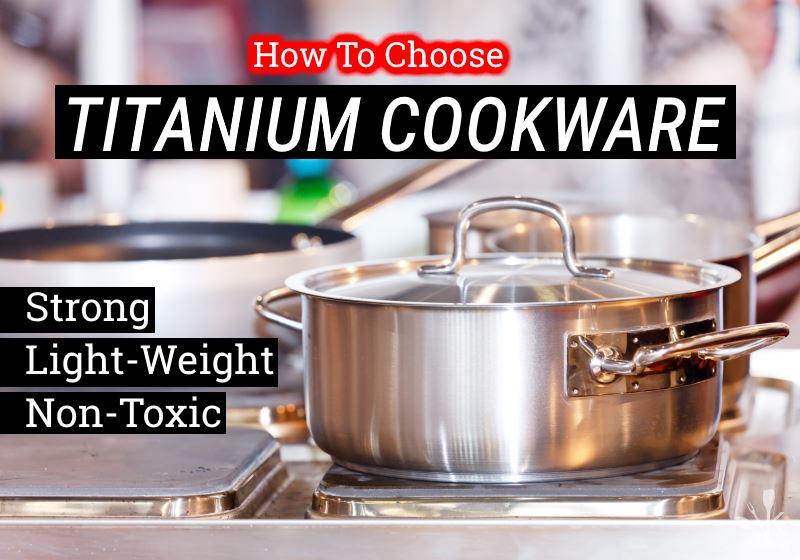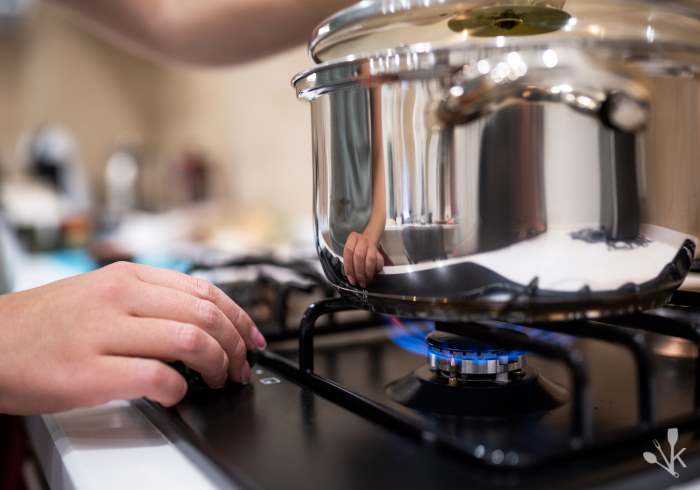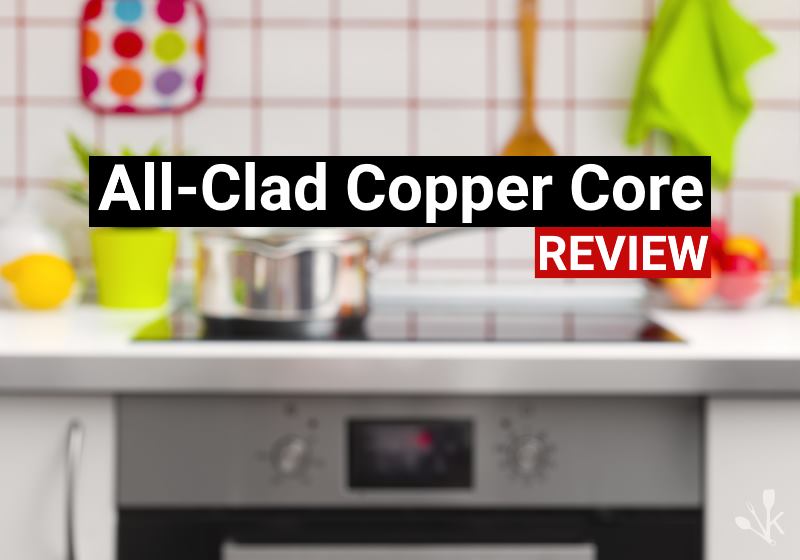You’re a cook who values the safety and durability of cooking with cast iron. Also, you probably adore your glass top stove.
While you technically can use cast iron on your glass stovetop, proceed with caution the next time you use your best cast-iron skillet. Cast iron cookware is a great fit for your favorite recipes, but it’s not the best fit for your new glass top stove.
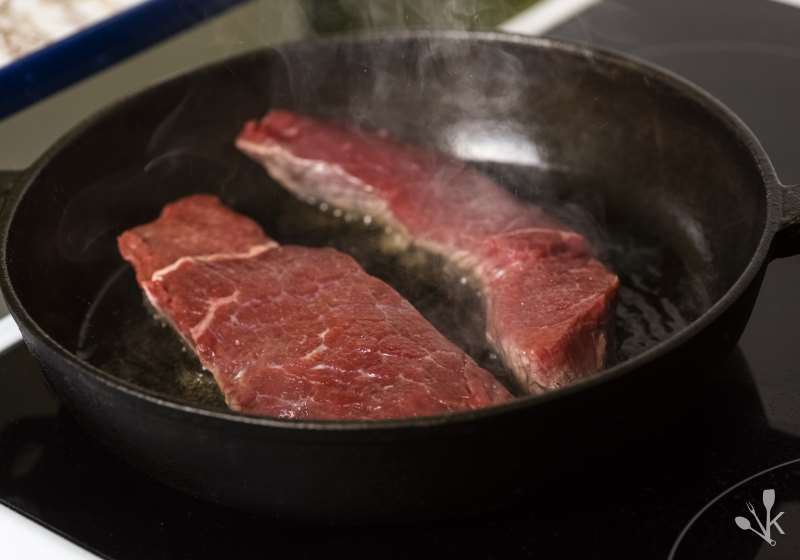
Cast iron is a heavy metal that’s made to be tough and rigid. On the other hand, your glass top is delicate and needs to be handled with care.
With the possibility of scratching and cracking, it’s hardly sensible to use such cookware on your beautiful glass top, right? Wrong!
Before you cook with your valuable Griswold cast iron, we recommend considering the tips in this guide before the next time you use cast iron on your glass cooktop.
Changed your mind? No problem! See our guide on how to use non induction cookware on an induction cooktop.
Problems Using Cast Iron On Glass Top Stoves
Electric glass cooktop stoves and induction glass top stoves work a little differently. An electric glass stovetop heats up beneath the surface of a pan or pot.
Induction stoves work by transferring eddy current to the ferromagnetic material, such as cast iron, allowing the cookware to heat up from the inside.
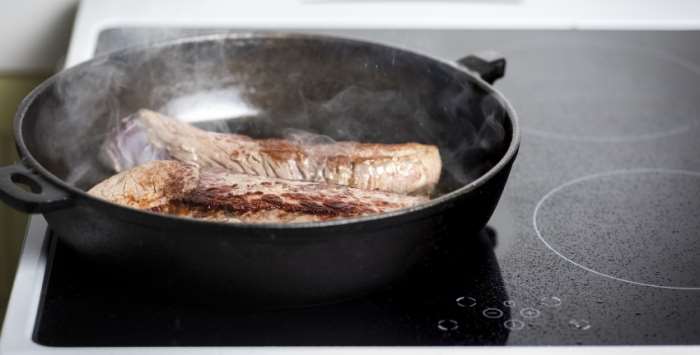
On the topic of the glass or ceramic surface, none of that is relevant. It’s good to know the difference between the two, though. What’s important is that both stove types have that attractive but delicate surface.
Glass surfaces are not as resistant to weight, temperature change, and normal wear and tear as coil ranges. Two significant issues of concern are scratching and cracking.
Why Is Cast Iron So Harsh On Glass Stovetops?
Let’s start with the obvious. Cast iron is an alloy made of iron and around 4 percent carbon. It also has a few trace minerals, but it’s mostly made of one of the most indestructible heavy metals.
In addition to its weight and indestructible nature, cast iron isn’t usually smooth. As you may have guessed, it wasn’t initially intended to be used with anything made from glass. Some of its earlier uses were to make canons and bridges.
Scratching
Imagine that you’re looking at a nice, solid cast iron skillet. It might be better if you go and grab a cast-iron skillet for explanation purposes. Rubbing your hand across the surface, you may notice the rough, grainy texture.
Now imagine sliding it back and forth, day after day, against a smooth glass surface. You are bound to scratch the surface, and it’s not pretty. A great way to ruin your entire day is to see the multiple scratches on your once shiny and smooth glass surface.
Scratching can also occur just by placing this heavy cookware on your stove since it will dig into the surface. That is especially true for cast iron that isn’t completely flat on the bottom. If the cookware has a slight curve or has ridges and shapes on the bottom, it’s likely to leave a mark.
Cracking
Another possible accident waiting to happen is cracking. This can occur if you accidentally drop your cast iron onto your glass stovetop. It can also occur over time from the prolonged stress of such heavy metal.
One other way that can cause the stove to crack is temperature shock, also known as thermal shock. We all know how well cast iron holds heat. Placing hot cast iron on a cold glass surface can shock the surface and cause it to crack.
How To Protect Glass Top Stove From Cast Iron
It’s understandable if you must still use your favorite cast iron cookware on your glass stovetop. Cast iron does have a lot of positive features. Just be sure to take a few measures first.
Protective Covers And Heat Diffusers
Fortunately, there are a few types of protectors you can use on your glass stovetop. The first type of protector is to be used underneath the cookware while cooking. It’s also called a heat diffuser.
The device is intended to help distribute heat evenly while cooking and is placed between your cookware and the stove’s surface. The diffusers with a completely flat surface are recommended over those that are not. Some are compatible with both induction and electric ranges.
Next is the anti-slip protector to be used during cooking. The purpose is to prevent pots and pans from slipping during use. It’s also made to protect the stove’s surface from scratches.
The last is a full coverage protector to cover your stove while it’s not on. These types of mats allow you to use your stove as an additional counter space. They’re heat resistant up to about 500 degrees Fahrenheit and can be used while the stove is on.
Wash Your Cast Iron Cookware Before Use
While washing your pots and pans after use is excellent unless you want to preserve your seasoning, wash before you begin using them as well. This is to make sure there are no remaining food particles that could carbonize.
Carbonization happens when leftover food particles solidify and stick to the bottom of your pan. These leftover solids can scratch and puncture your glass surface. Consider using scuff pads to smooth out the surface as much as possible.
Don’t Slide Cast Iron Cookware Against The Stove’s Surface
As mentioned earlier, cast iron is heavy and grainy. So the friction from sliding can do some serious damage to glass surfaces.
If sliding is a must, consider a protector or diffuser. Otherwise, you might want to stick with gas and coil ranges.
Try Enameled Cast Iron Instead
Enameled cast iron might be the best thing since sliced bread. The coating, which is usually a type of glass compound, prevents corrosion and prevents iron from leaking into your food. It also can extend the life of cast iron.
This is excellent news for glass and ceramic stovetop owners. The enamel is smooth, preventing scratches. It’s also easier to clean, so you don’t have to worry about scuffing and frequent washing to prevent carbonization.
While some enameled cast iron cookware isn’t completely flat on the bottom, there’s still a risk of damage. It’s also worth noting that this type is a bit more expensive.

